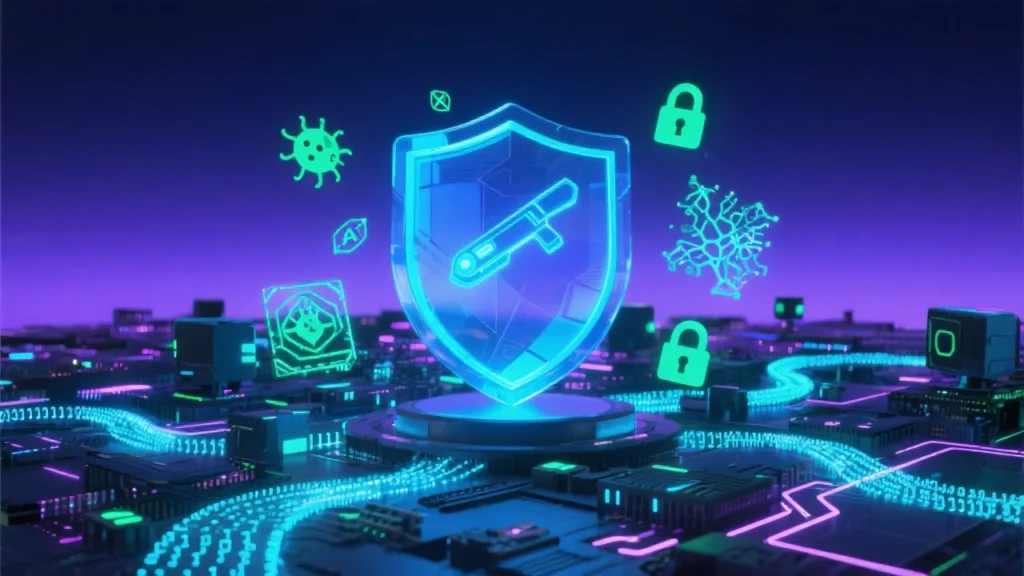Picture the internet as a vast Wild West frontier, where outlaws (hackers) are armed with AI slingshots and shape-shifting disguises. Your trusty antivirus (AV) software? It’s evolving from a lone sheriff with a badge to a high-tech posse with predictive powers. In this post, we’ll saddle up and explore how AV is gearing up for 2025’s threat rodeo—from ransomware stampedes to stealthy AI ambushes. No matter if you’re a casual user dodging email traps or a dev hunting zero-days, this guide breaks it down simply and smartly. Let’s ride!
The Shifting Sands: Why Old-School AV Needs a Makeover
Cyber threats aren’t the pixelated viruses of yesteryear. In 2025, we’re dealing with sophisticated baddies: ransomware that encrypts your files and demands crypto payoffs (surging 84% year-over-year, per SentinelOne), phishing powered by generative AI (up a jaw-dropping 1,265%), and “malware-free” intrusions that slip past defences undetected (79% of cases, according to CrowdStrike’s 2025 Global Threat Report).
For newbies: Ransomware is like a digital lock on your vacation photos—pay up or lose ’em forever. For the pros: These often involve APTs (Advanced Persistent Threats) exploiting supply-chain weaknesses, with cloud breaches spiking 75% in 2023 and average breakout times hitting 51 seconds.
The problem? Classic AV relies on “signatures”—like matching a criminal’s mugshot. But threats now mutate faster than a virus in a sci-fi flick, rendering signatures obsolete. Enter the evolution: AV is becoming proactive, not reactive, to tame this Wild West.
AV’s New Arsenal: AI, Behaviour Smarts, and Beyond
Forget clunky scans—future AV is like a vigilant AI sidekick, always one step ahead. Here’s the exciting toolkit:
- AI-Powered Prediction: The Fortune Teller
Simple take: AI learns from global attacks to spot trouble before it hits, like a weather app warning of a storm. Tech deep-dive: Machine learning algorithms analyse patterns across billions of data points, reducing false alarms and slashing breach costs by $2.22 million on average (IBM stats). Platforms like SentinelOne already use this for real-time threat hunting. - Behavioural Monitoring: The Lie Detector
For everyone: It watches if an app “behaves” suspiciously, like a file suddenly emailing your contacts. Expert angle: This Endpoint Detection and Response (EDR) tech uses heuristics to flag anomalies, countering polymorphic malware and zero-days that evade signatures. - Zero-Trust Fortresses: No Entry Without ID
Easy analogy: Every door in your digital house requires a fresh keycard—trust nothing. Pro insight: Integrating with frameworks like NIST verifies users, devices, and apps continuously, thwarting insider threats and the 33% rise in supply-chain attacks (affecting 183,000 customers in 2024).
Trend alert: Gartner forecasts that by 2026, 60% of AV will be AI-augmented, blending with cloud-native tools for seamless, device-agnostic protection.

Horizon Scanning: Quantum Shields, Cloud Dominance, and Everyday Empowerment
Looking further? AV is prepping for quantum leaps—literally. Quantum computers could shatter current encryption, so expect “post-quantum” cryptography embedded in AV suites. Cloud-first models will rule, offloading heavy lifting to servers for lighter, faster protection on your phone or laptop.
User-friendly twist: Imagine AV with intuitive apps that gamify security—earn badges for spotting phishing! For tech heads: Expect deeper SIEM (Security Information and Event Management) integrations for automated quarantines and forensic analysis.
Hurdles ahead? Balancing AI’s data hunger with privacy (hello, GDPR), and staying ahead of hacker AI. Bright side: Regulations like the EU AI Act will push ethical innovations.
Your Playbook: Gear Up for the Future
The takeaway? Antivirus isn’t fading—it’s reinventing as an intelligent guardian in a threat-filled frontier. With cybercrime eyeing $10.5 trillion in damages by 2025 (Statista), upgrading your AV is like arming your posse.
Beginners: Opt for built-in options like Microsoft Defender or free tiers from Avast—enable auto-updates and two-factor auth. Pros: Explore EDR from Check Point or Palo Alto for enterprise muscle.
What’s your biggest cyber worry? Share in the comments! If this sparked your interest, hit subscribe for more Ksqaured deep dives. Stay vigilant, folks—the Wild West awaits.
Sources: CrowdStrike 2025 Global Threat Report, SentinelOne Cyber Security Statistics, IBM Cost of a Data Breach Report, Gartner forecasts.


Leave a Reply